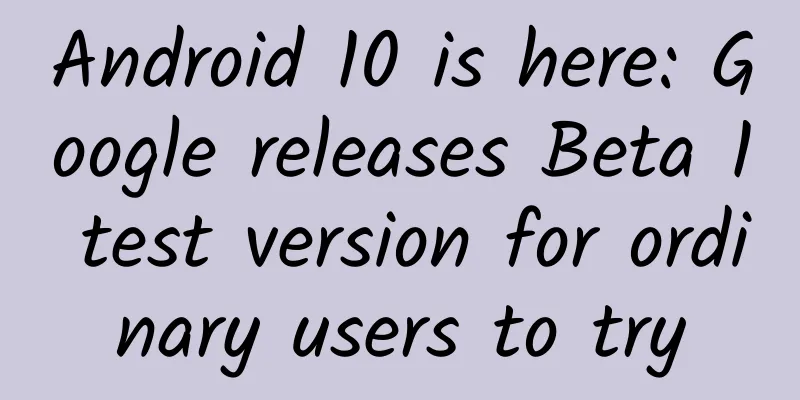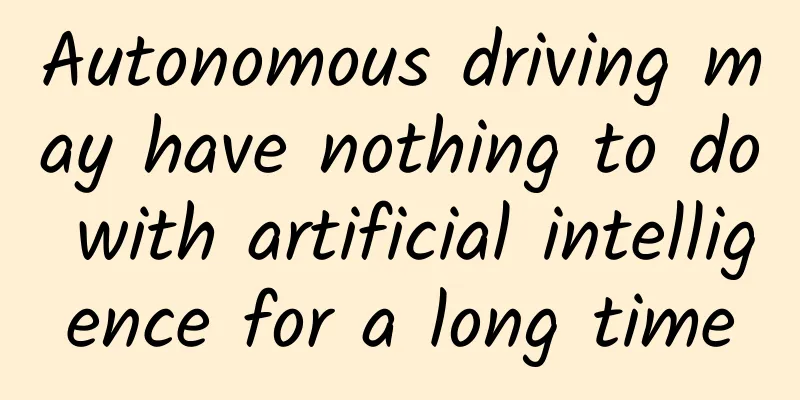Android 10 is here: Google releases Beta 1 test version for ordinary users to try

|
Google today released a new operating system, Android Q Beta 1. Its main features include enhanced privacy and security features, support for foldable screen enhancements, new API interfaces, new media codecs, new camera features, scalable neural network API (NNAPI), support for graphics API Vulkan 1.1, and faster application startup speed. Developers can now download it from google.com/android/beta. It includes a preview software development kit (SDK), provides developers with system images for Pixel, Pixel XL, Pixel 2, Pixel 2 XL, Pixel 3, Pixel 3 XL, and Google's official Android emulator. This is the fourth consecutive year that Google has released a developer preview of a new Android operating system in March, following Android N (later named Android Nougat), Android O (Android Oreo), and Android P (Android Pie). Android Q Beta 1 is not only a developer preview, but also a beta version of this new operating system. This means that not only developers can apply Android Q, but ordinary users can also try it out. As before, the development preview operating system is named Android Q, and Google will later choose a word starting with Q as the name of the operating system.
In past years, Google has tended to wait until the second developer preview to roll out the new operating system to more phones, and that's likely to remain the case, but Android Q Beta 1 supports more Pixel smartphones than its predecessors. The most eye-catching feature of the developer preview of Android P is the support for screen displays such as the "notch screen". In terms of adapting to foldable devices, Google released support for foldable devices as early as November last year. The main features of the Android Q developer preview are as follows: enhanced privacy and security features, enhanced support for foldable screens, new API interfaces, new media codecs, new camera features, scalable neural network API (NNAPI), support for graphics API Vulkan 1.1, and faster application startup speed. Android Q Developer Preview Features Device location: Allows users to control when apps can access location information, including when apps don’t use location information. Users can set apps to not use location information, and can choose to only use their location information when the app is running or in the background. Storage: The Android Q developer preview provides more control over shared file access. Users will be able to control app access to photo, video, and audio collections through permissions. Apps must use the system file picker for data downloads, which allows users to decide which downloaded files the app can access. Developers must also change how apps use shared areas on external storage. Background running: Reduce distractions such as apps popping up unexpectedly and occupying the screen. Apps will be prohibited from launching Activity components in the background. App developers can quickly attract users' attention through high-priority notifications or full-screen images, such as incoming calls or alarm apps. User data ID : The Android Q developer preview restricts access to non-resettable device identifiers, including device IMEI, serial number, and similar identifiers. By default, Android Q also randomizes the device's MAC address when connecting to different Wi-Fi networks. Support for foldable screens: Apps will be better adapted to foldable screens and other large-screen devices. Sharing shortcuts: Under the new operating system, applications can share shortcuts with other applications more quickly, and users can jump directly to shared content in another application more quickly. Settings panel: Ability to display key system settings directly above and below the application. The new settings panel API uses the slice feature introduced in Android 9 Pie to provide users with a floating UI with relevant system settings (such as Wi-Fi, airplane mode, mobile data, NFC, and audio volume). Users do not need to leave the application to set the system. Connection permissions, privacy, and security: FINE location permissions are required for Bluetooth, cellular, and Wi-Fi connections, making your device more secure when connecting to home, work, and open networks. Improved peer-to-peer and internet connections: The Wi-Fi stack has been refactored to improve privacy, performance, and common use cases such as managing IoT devices and suggesting internet connections. Android Q will handle Wi-Fi scanning on its own, display matching networks in the Wi-Fi selection list, and connect to those networks based on history when in range. Wi-Fi performance mode: High performance and low latency modes allow developers to call corresponding functions to request adaptive Wi-Fi. Google hopes these features will help with real-time gaming, active voice calls, and similar use cases. Support for dynamic depth images: Applications can request a dynamic depth image, which contains a JPEG, XMP metadata related to depth, and depth and confidence maps embedded in the same file. This allows developers to support use cases such as 3D images and AR photography. Dynamic depth will be an open image format in the Android ecosystem. New audio and video codecs: Support for open source video codec AV1, audio codec Opus, and HDR10+. Native MIDI API: This API allows applications that perform audio processing in a C++ environment to communicate with MIDI devices through the NDK. It allows retrieval of MIDI data in audio callbacks using non-blocking reads, thus enabling low-latency processing of MIDI messages (sample application source code). Support for Vulkan native rendering engine ANGLE: Support for the rendering engine ANGLE enables applications and games that use OpenGL ES to take advantage of the performance and stability of Vulkan, with high freedom and openness. Vulkan extensions: Google is working with device manufacturer partners to make all 64-bit devices running Android Q or higher compatible with Vulkan 1.1. As a result, Vulkan will become a unified high-performance graphics API used by applications and games. Neural Network API 1.2: This includes 60 new projects, including ARGMAX, ARGMIN, quantized LSTM, and a series of performance optimizations. Google is working with hardware vendors and mainstream machine learning frameworks such as TensorFlow to optimize support for NNAPI 1.2. ART performance: Continue to improve the application running mode, help applications start faster, consume less memory, and help applications run better on low-end devices. Support for TLS 1.3 has been added and enabled by default for all TLS connections, and Google said its benchmarks show that secure connections can be established up to 40% faster using TLS 1.3 compared to TLS 1.2. More compatibility through public APIs: Google has restricted access to more non-SDK interfaces and requires developers to use public interfaces. Test Plan The goal of the Android Q developer preview is to allow early adopters and developers to start exploring new features and APIs for apps, test compatibility, and give feedback before Google releases more details of the operating system in May 2019. Last year, Google released five developer previews. This year, Google plans to release six beta versions of the operating system. |
<<: Why do you keep revising your design? These 4 methods can help you pass it in one draft!
Recommend
CES2015: ASUS T90Chi is coming with a strong presence
The 2015 World Consumer Electronics Show has fina...
Why is the US determined to impose high tariffs? China has not yet become a major automobile exporter
According to Forbes, it has become a question for...
As the iPhone’s “remaining power” is about to fade, how can the smartphone industry survive the “ten-year itch”?
It turns out that not only our country’s economy ...
Exclusive interview: An article that helps you truly understand DSP advertising
Although DSP and information flow have been aroun...
Will GitHub's App be open source?
As early as the GitHub Universe conference in 201...
"Life Search Engine" lands on iPhone, Black Mirror becomes reality
The smart mobile assistant connected to the big m...
A widget dancing on a needle with shackles on its legs
Since iOS 10, when Apple made a major revision to...
Industrial 3D vision opens up new horizons for smart manufacturing
In 1969, the first CCD image sensor was born in B...
The secret to increasing followers through short video promotion!
How long has it been since you finished reading a...
Why does food make people happy or sad?
Author: Fu Jia, deputy chief technician, Changchu...
Channel pitfalls: 8 hidden rules of App operation
First, let’s deconstruct the position of App Oper...
Birds are "master ventriloquists" who can even imitate the sounds of other animals
Produced by: Science Popularization China Author:...
Which platform is suitable for financial loan advertising? How to place financial loan advertisements!
The 618 carnival has been going on for 3 consecut...
Review of Pinduoduo’s gameplay in 2019: branding and hit products!
Today I will mainly share with you some trial and...
After watching "Tucao Conference", I learned the real trick to increase conversion rate by 200%!
"Look, after not seeing you for a long time,...









